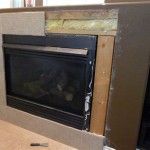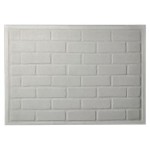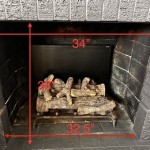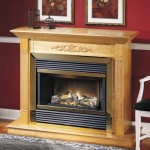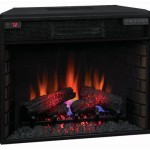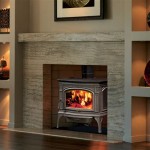Building an Outdoor Fireplace with Cement Blocks: A Comprehensive Guide
An outdoor fireplace provides a focal point for any backyard, extending living space and offering warmth and ambiance for gatherings. Constructing an outdoor fireplace using cement blocks, also known as cinder blocks or concrete masonry units (CMUs), offers a cost-effective and durable solution. This article provides a detailed guide on planning, preparing, and constructing an outdoor fireplace with cement blocks, emphasizing safety and structural integrity.
Before commencing any construction project, it is essential to consult local building codes and regulations. These codes often dictate setback requirements, fire safety standards, and necessary permits. Ignoring these regulations can result in costly alterations or even the removal of the structure. Furthermore, checking with the homeowner's association, if applicable, is crucial to ensure compliance with community guidelines.
The selection of cement blocks is paramount. Standard CMUs are readily available and are suitable for many applications. However, for added aesthetic appeal, consider using decorative blocks or those with a textured finish. The chosen blocks should meet the required load-bearing specifications for the planned design. Acquiring all necessary materials upfront streamlines the construction process. This includes cement blocks, mortar mix, fire bricks (for the firebox), fire clay mortar (for fire bricks), sand, gravel, a level, a trowel, safety glasses, work gloves, a measuring tape, a concrete mixing tub, and a water source.
Planning and Design Considerations
The success of an outdoor fireplace project hinges on meticulous planning. The design should consider the desired size, style, and location of the fireplace. A detailed sketch or blueprint helps visualize the finished product and ensures accurate material estimation. Factors such as prevalent wind direction should influence the placement of the fireplace to optimize smoke ventilation. Furthermore, the proximity to combustible materials, such as fences or trees, requires careful consideration to mitigate fire hazards. The height of the chimney is also a crucial design element, as it directly affects the draft and the efficient removal of smoke. A chimney that is too short may result in smoke lingering in the outdoor space, while a chimney that is too tall may detract from the overall aesthetic.
The foundation is the most critical component of any structure, including an outdoor fireplace. A solid and level foundation is essential to prevent settling and cracking. The foundation should extend below the frost line in colder climates to prevent heaving due to freezing and thawing cycles. A typical foundation consists of a concrete slab reinforced with steel rebar. The size of the foundation should be larger than the footprint of the fireplace to provide adequate support and stability. The foundation should be allowed to cure fully before commencing the construction of the fireplace itself. This curing process typically takes several days and allows the concrete to reach its maximum strength.
The firebox, the chamber where the fire burns, requires special attention. Fire bricks are specifically designed to withstand the high temperatures generated by a wood-burning fire. These bricks should be laid with fire clay mortar, which is formulated to withstand extreme heat without crumbling or cracking. The dimensions of the firebox should be proportionate to the overall size of the fireplace. A firebox that is too small may not provide adequate space for a sufficient fire, while a firebox that is too large may result in excessive heat loss. A lintel, typically constructed from steel or reinforced concrete, supports the weight of the structure above the firebox opening. The lintel should be adequately sized to prevent sagging or cracking under the load.
Constructing the Fireplace: Step-by-Step
With the foundation cured and the design finalized, the construction process can begin. The first course of cement blocks should be carefully laid on a bed of mortar, ensuring that it is perfectly level. A level should be used frequently to check the alignment of the blocks. Subsequent courses of blocks are then laid, staggering the joints for added strength. Mortar should be applied to both the horizontal and vertical surfaces of the blocks, creating a strong bond. Excess mortar should be removed with a trowel to create a clean and professional finish. Weep holes, small openings in the mortar joints near the base of the fireplace, allow moisture to escape, preventing water damage.
As the walls of the fireplace rise, the firebox is constructed using fire bricks and fire clay mortar. The back wall of the firebox should be slightly angled to reflect heat outwards. The throat of the fireplace, the opening above the firebox that leads to the chimney, should be carefully shaped to optimize airflow. The chimney is then constructed using cement blocks, maintaining a consistent diameter throughout its height. A chimney liner, made of clay or stainless steel, is often used to protect the chimney from the corrosive effects of smoke and creosote. A rain cap is installed at the top of the chimney to prevent water from entering and damaging the structure.
During the construction process, it is essential to regularly check the plumb and level of the walls. Minor adjustments can be made as needed to ensure that the fireplace is structurally sound and aesthetically pleasing. The mortar should be allowed to cure properly before applying any finishing touches. This curing process typically takes several days, depending on the weather conditions. Avoid building during periods of heavy rain or extreme temperatures, as these conditions can affect the curing of the mortar.
Safety and Finishing Touches
Safety is paramount during the construction and use of an outdoor fireplace. Wear safety glasses and work gloves to protect against mortar splashes and sharp edges. Ensure that the construction site is well-ventilated to avoid inhaling dust and fumes. Keep a fire extinguisher readily available during use. Never leave a fire unattended, and ensure that the fire is completely extinguished before leaving the area. Supervise children and pets closely when the fireplace is in use.
Once the construction is complete, various finishing touches can be added to enhance the aesthetic appeal of the fireplace. The exterior of the fireplace can be covered with stucco, stone veneer, or brick to create a custom look. A hearth, a non-combustible surface extending outwards from the firebox opening, provides a safe and convenient area for tending the fire. A seating area can be incorporated around the fireplace to create a cozy and inviting outdoor space. Outdoor lighting can be added to illuminate the area and enhance the ambiance. Consider planting fire-resistant shrubs and plants around the fireplace to create a natural and attractive setting.
Regular maintenance is essential to prolong the life of an outdoor fireplace. Inspect the fireplace regularly for cracks or damage, and repair them promptly. Clean the chimney regularly to remove creosote buildup, which can pose a fire hazard. Protect the fireplace from the elements by covering it with a tarp during periods of heavy rain or snow. By following these guidelines, an outdoor fireplace constructed with cement blocks will provide years of enjoyment and enhance the value of any property.

How We Built Our Outdoor Fireplace Chris Loves Julia

How To Make Your Own Fire Pit Artful Homemaking

How To Build An Outdoor Fireplace Contractor Broomfield Part 2

Backyard Fireplace Part 2 Milk Paint

Outdoor Fireplace With Bench Seating W Tips From A Professional Mason

How To Build An Outdoor Fireplace Today S Creative Life

How To Build An Outdoor Fireplace Step By Guide Buildwithroman

Build An Outdoor Fireplace The Shed

Outdoor Fireplace With Bench Seating W Tips From A Professional Mason

Stonetutorials Living Stone Masonry
Related Posts

